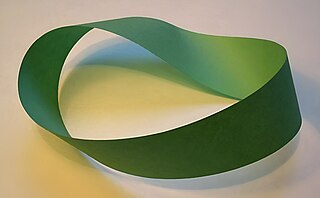Quantum Mechanics and Cosmology’s Holographic Principle
Quantum Mechanics and Cosmology’s Holographic Principle
Rodney Bartlett, Information Physics Institute, s266976@students.cdu.edu.au
A global issue is - how can interstellar travel be achieved? I'd use quantum mechanics as "proof of concept" that cosmology's Holographic Principle can be used to achieve interstellar, intergalactic, and time travel (both to the past and the future). These forms of travel will be possible because of deletion of the 3rd dimension, thus eliminating distances in space-time (no distance in space means instant arrival in another galaxy and no distance in time means you can instantly go to another century). Quantum mechanics is proof of concept of these trips in space-time because deletion of distance/3rd-dimension applies to the experimentally-verified existence of subatomic particles in two places at once.
The Mathematical Universe Hypothesis (MUH) is a speculation put forward by physicist and cosmologist Max Tegmark. (1, 2) It speaks of “altogether different equations and mathematical structures”. This Perspective could use such structures in the following way - one dimensional (1D) electrical pulses could form binary digits that could encode 2D Mobius strips which would be the next level up in particles' structure. Cosmology's holographic principle suggests the 3rd dimension results from information in the 2nd dimension. The 2nd D might be the Mobius strips comprising particles and the 3rd D * might be capable of being deleted by programming the binary digits (used in electronics) which act as Hidden Variables that aren’t confined to one location but are compatible with quantum mechanics (not with known probabilistic quantum mechanics but with quantum certainty, for they give precise calculations). When subatomic particles appear in two places at once, the holographic principle can be combined with the precision of unrecognized quantum certainty. Then the particles would actually be in one place (quantum entangled) since the 3rd D of space between their centres would be eliminated (since we live in space-time, the time taken to travel the distance between particles is also eliminated).
* The 3rd dimension we normally perceive could be thought of as a figure-8 Klein bottle ie it could be thought of as the union of two Mobius strips (3) or as projection of the information inherent in particles' constituent strips. Since so-called "imaginary" numbers are essential in quantum mechanics, the 4th dimension of time might be described by the Complex Plane's Wick Rotation which is often regarded as nothing more than mathematical convenience. Adapting a paper by Albert Einstein (4) - if electromagnetism's photon and gravitation's graviton are composed of trillions of Mobius strips, electromagnetic ang gravitational interactions could produce the mass and quantum spin of every other particle, including the bosons of an atom's two nuclear forces and even the Higgs boson (making the Higgs field a union of electromagnetic and gravitational fields).

Figure 1. Mobius Band (left) and figure-8 Klein Bottle (right). The bottle may be called a Mobius Doublet since it’s formed from the union of two bands.
(Mobius figure from https://upload.wikimedia.org/wikipedia/commons/thumb/7/79/M%C3%B6bius_Strip.jpg/320px-M%C3%B6bius_Strip.jpg
Klein fig. from http://plus.maths.org/content/os/issue26/features/mathart/index)
Figure 2. WICK ROTATION: The complex plane reveals i’s special relationship with cycles via the circle of i, also known as Wick rotation. Whenever a point on the complex plane is multiplied by i, it moves a quarter rotation around the origin or center of the plane.
The connection discussed here between quantum mechanics and cosmology's holographic principle suggests the microscopic is linked to the macroscopic. Besides quantum entanglement, macro-entanglement seems to exist and it eradicates distance between galaxies or periods of time when the holographic principle is combined with the precision of unrecognized quantum certainty.
References
(1) Tegmark, Max (November 1998). "Is ‘the Theory of Everything’ Merely the Ultimate Ensemble Theory?". Annals of Physics. 270 (1): 1–51.
arXiv:gr-qc/9704009. doi:10.1006/aphy.1998.5855
(2) Tegmark, M., Our Mathematical Universe. Random House/Knopf, January 2014
(3) Polthier, Konrad, "Imaging maths - Inside the Klein bottle", http://plus.maths.org/content/os/issue26/features/mathart/index
(4) Einstein, Albert (1919). “Spielen Gravitationfelder im Aufbau der Elementarteilchen eine Wesentliche Rolle?” [Do gravitational fields play an essential role in the structure of elementary particles?]. Sitzungsberichte der Preussischen Akademie der Wissenschaften, [Math. Phys.], 349-356, Berlin
Follow the Topic
Ask the Editor – Space Physics, Quantum Physics, Atomic, Molecular and Chemical Physics
Got a question for the editor about Space Physics, Quantum Physics, Atomic, Molecular and Chemical Physics? Ask it here!
Continue reading announcement
Please sign in or register for FREE
If you are a registered user on Research Communities by Springer Nature, please sign in